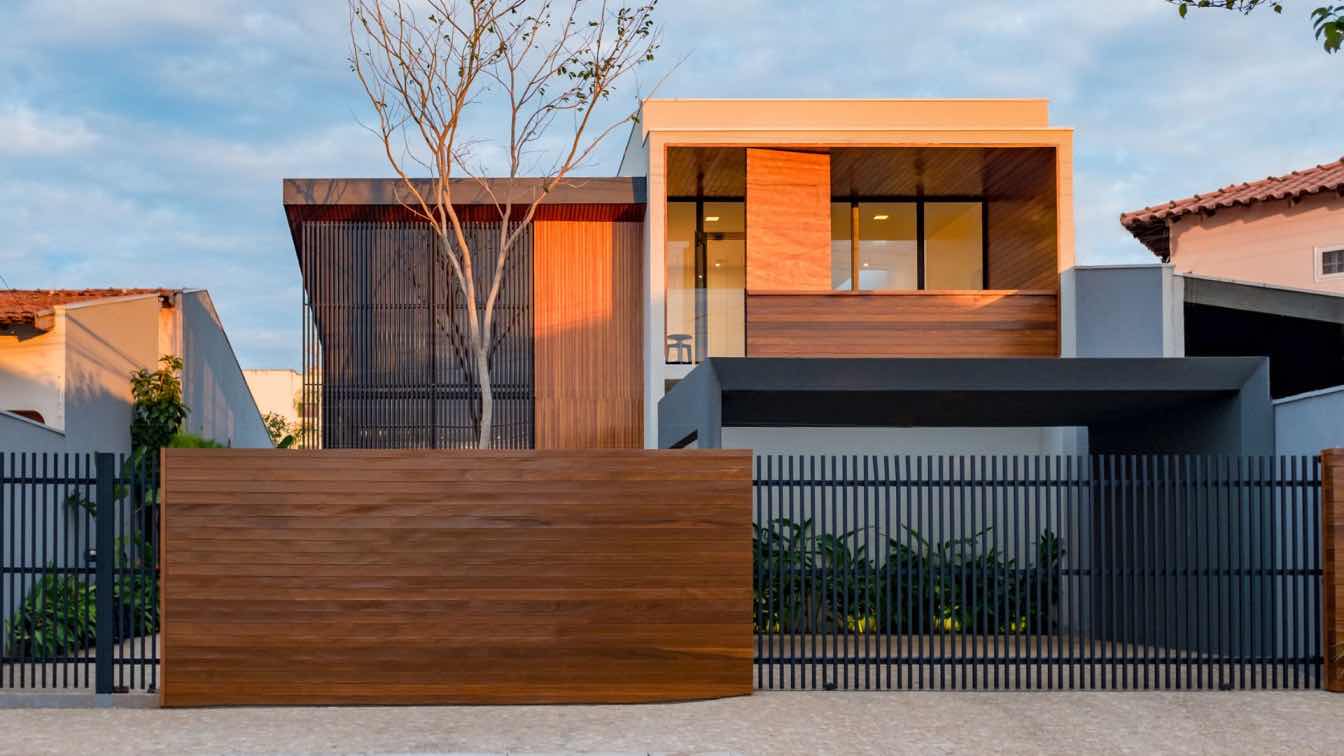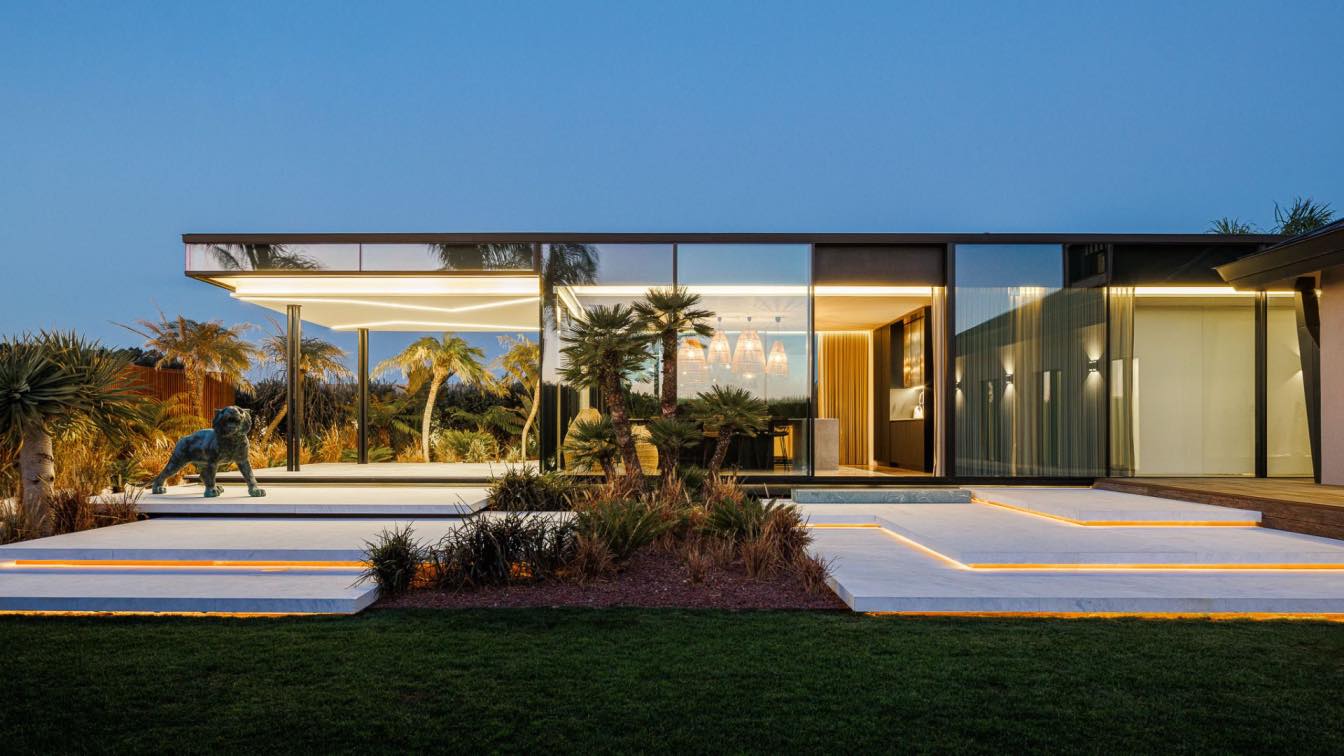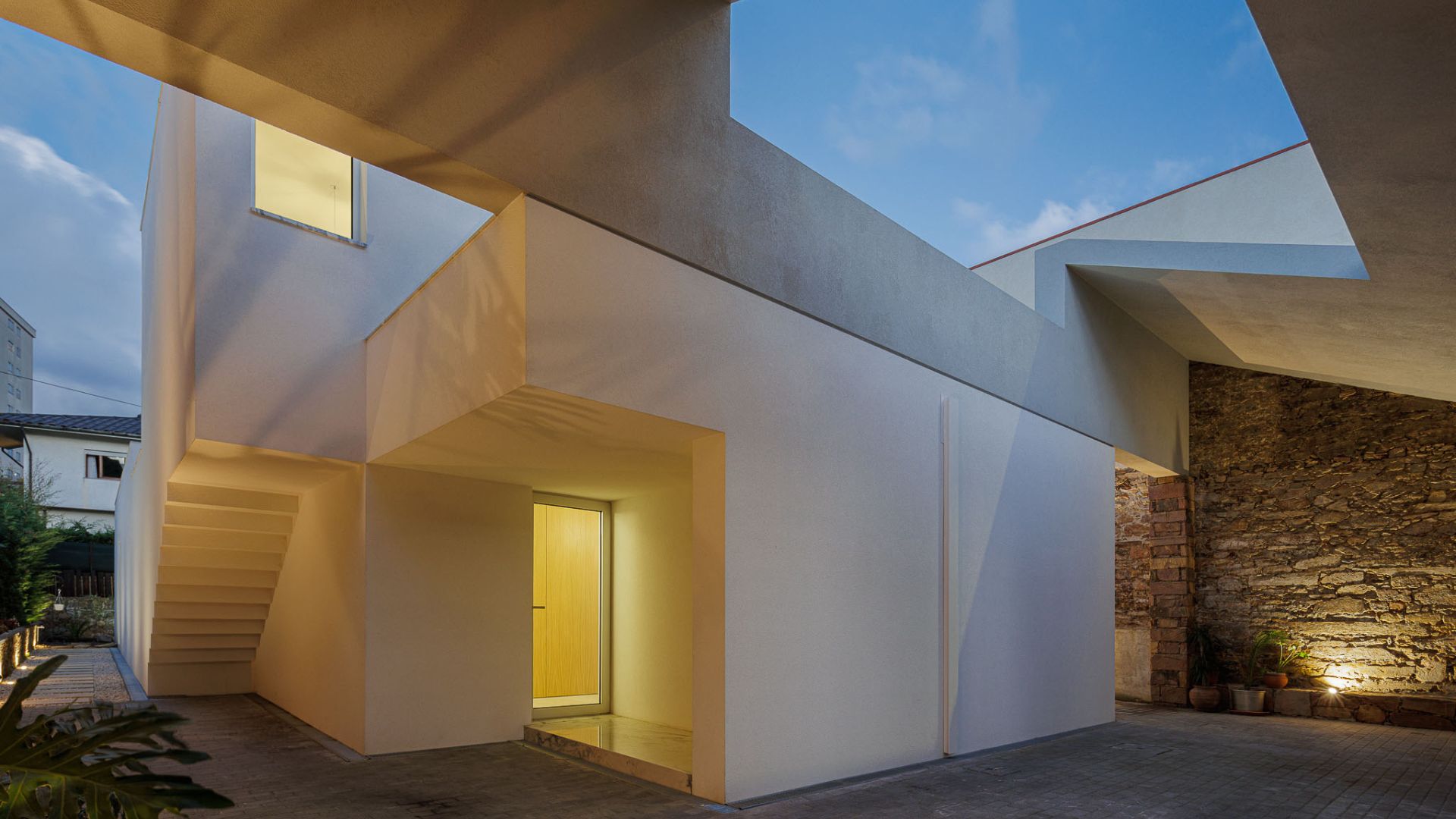Residence in the interior of São Paulo stands out for its contemporary architecture and extensive use of glass enclosures.
Located in the city of Nova Granada, in the countryside of São Paulo, the Casa Granada project stands out for the fusion between the construction solutions of the architecture office Estúdio HAA! and the specificities and demands of the clients.
The aim was to design a residence with open communication between the outdoor area, maximizing natural lighting and ventilation, and preserving the original topography, thus reducing drastic alterations in the surroundings and minimizing time, cost, and waste during construction, fundamental principles in the development of the office's projects.
The house was divided into three distinct blocks. The first, called the rigid block, comprises a TV room, kitchen, and powder room on the first floor, while the second floor houses the bedrooms, a shared bathroom, office, and a balcony. To connect the floors, a staircase was designed with custom metal components and steps covered in wood, ensuring safety and stability. Additionally, the lateral protection of the staircase is provided by steel cables that extend to the roof slab.
The second block, called the lightweight block, is intended for the living and dining areas, with the proposal of integration with the lateral garden. Built with a metal structure and glass, this space seeks to unite the internal and external areas. Adjacent to this structure is the master suite, integrated with the outdoor area, meeting the owners' request for accessibility and comfort, as they wish to enjoy the tranquility of the vegetation and the bedroom without the need to use stairs..
The residence also includes an annex in the outdoor area that houses the laundry area, bathroom, and barbecue area, with a view of the pool and the garden. The Casa Granada project breaks the monotony of a flat terrain by incorporating the characteristic unevenness of this topography into the roof of the lighter block of the construction. This approach aims to break the uniformity of the original terrain, presenting a sense of variety and movement.













































